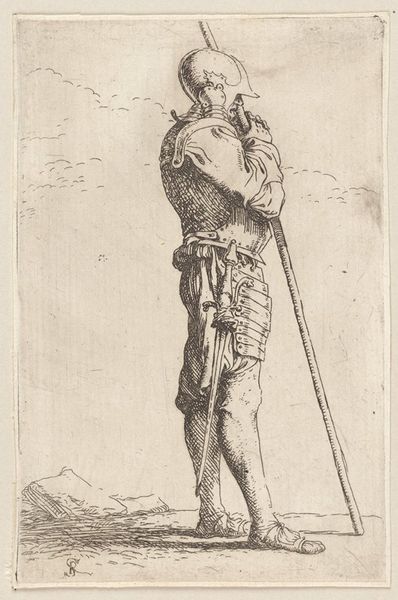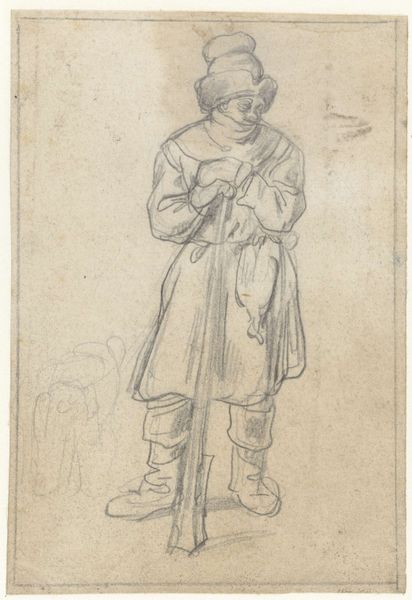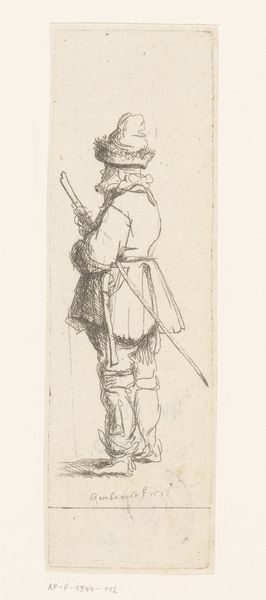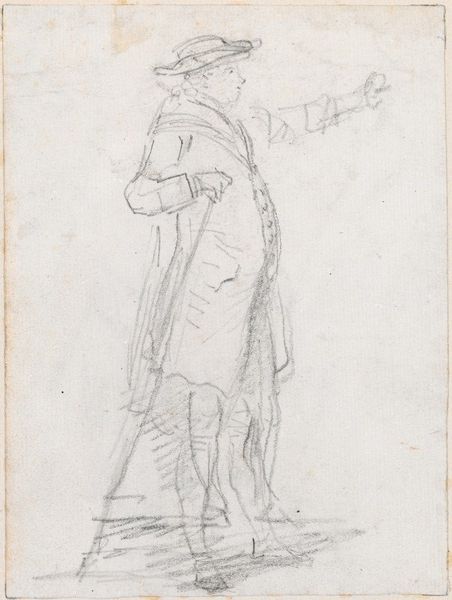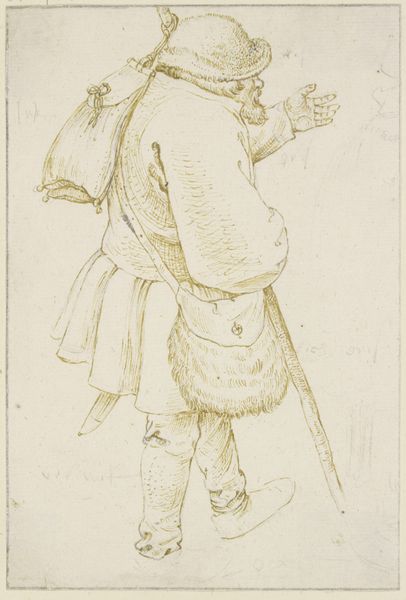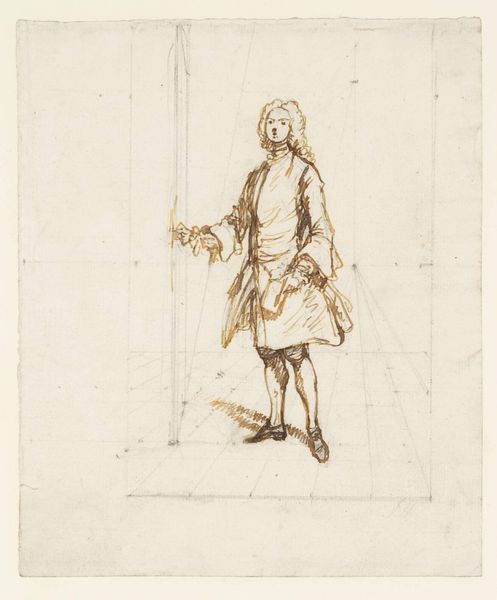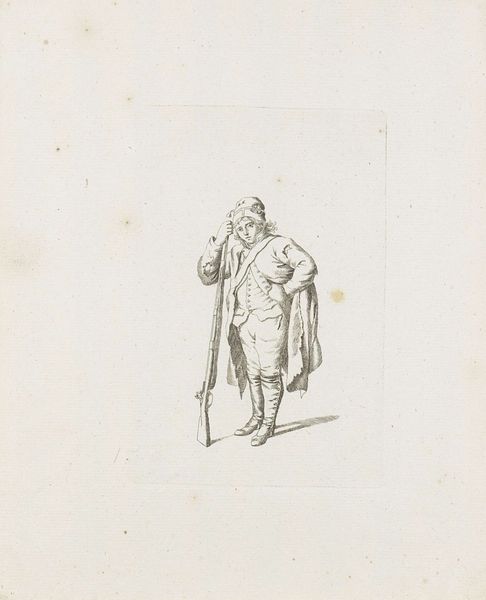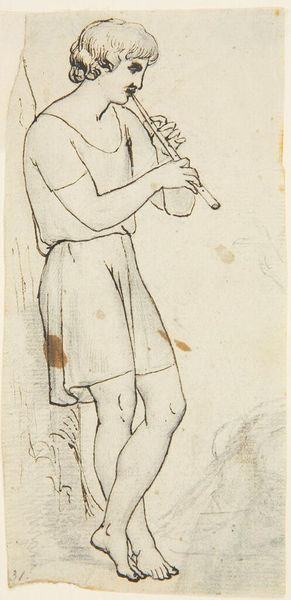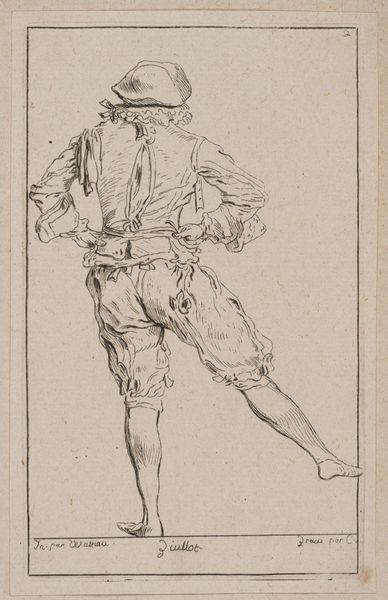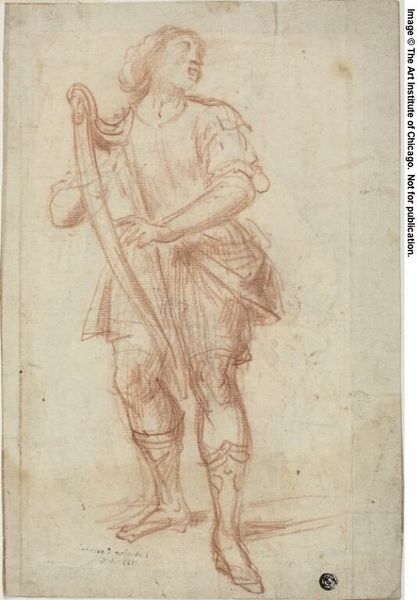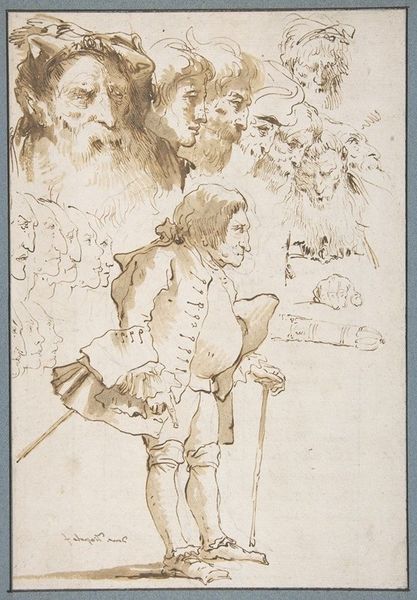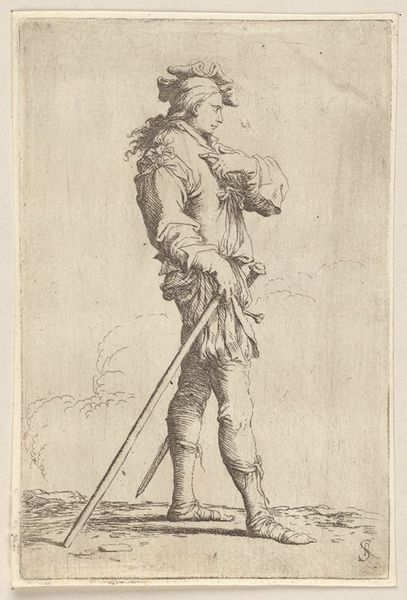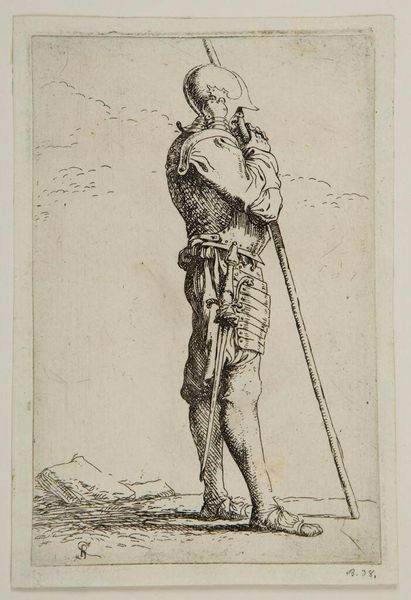
Dimensions: 168 mm (height) x 115 mm (width) (bladmaal)
Editor: This is "Sketch for Uffe Sage" by Lorenz Frølich, dating from between 1850 and 1853. It’s a pencil drawing and looks like a preliminary study. I’m really struck by how unfinished it feels, but the central figure has such presence. What can you tell me about it? Curator: It is interesting how Frølich uses the pencil, creating varying levels of details; you correctly noted the incomplete areas contrast with more refined elements of the central figure’s costume. Think about where this drawing was likely intended to be seen, and by whom. Frølich worked during a period of intense nationalism. How might a figure like Uffe Sage fit into that context? Editor: So, beyond the artistic technique, you are suggesting that understanding the social context – the rise of nationalism – is key to interpreting this sketch? Was Uffe Sage a significant figure at the time? Curator: Precisely. Frølich was making preparatory drawings of Viking heroes, which certainly appealed to national sentiments. How does Frølich visually communicate nobility, might, and the so-called Viking spirit? Consider how this image might contribute to building a specific national identity through visual representation. Editor: I guess his isolation in the drawing sets him apart, almost elevates him. It is a different take on nation-building I had not considered. Thank you! Curator: Indeed. And remember, sketches like these also circulated among artists and patrons, shaping tastes and artistic dialogues about the depiction of history and national identity. Considering art’s social role expands our understanding and deepens its meaning.
Comments
No comments
Be the first to comment and join the conversation on the ultimate creative platform.

